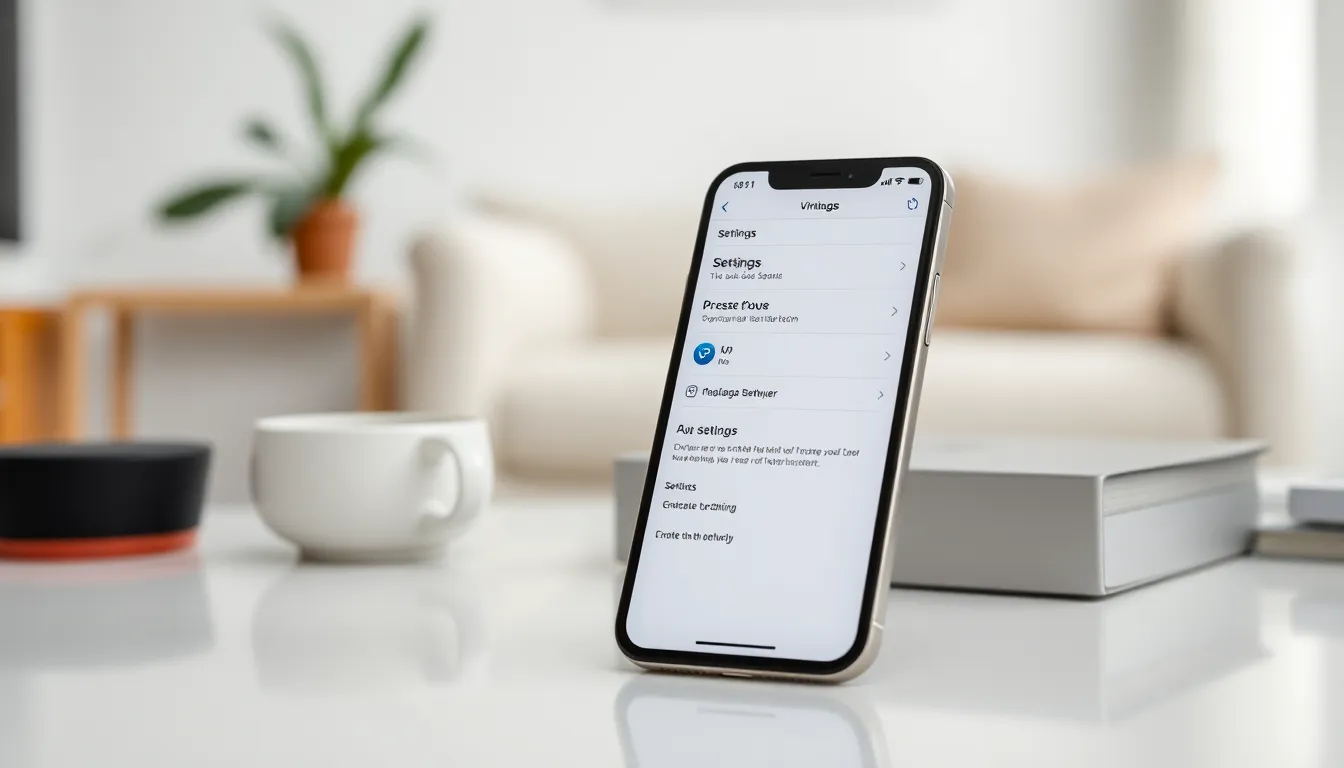Table of Contents
ToggleIn a world where apps multiply faster than rabbits, iPhones can sometimes feel like they’re carrying a digital weight. Ever notice your favorite apps lagging or your device acting like it’s stuck in molasses? Clearing the cache is like giving your iPhone a refreshing spa day, helping it shed those pesky remnants that slow it down.
Understanding Cache on iPhone
Cache plays a crucial role in the performance of an iPhone. By storing bits of data temporarily, it speeds up app loading times and enhances overall user experience.
What Is Cache?
Cache consists of temporary files and data generated by apps and websites. These files store frequently accessed information, allowing devices to retrieve it quickly. For example, cached images and web pages help improve loading speeds during subsequent visits. This data, while beneficial initially, can accumulate over time, leading to excessive storage use or even potential app malfunctions.
Why Clear Cache?
Clearing cache eliminates unnecessary data that can slow down app performance. It helps regain valuable storage space, which is essential for installing new applications or updating existing ones. Regularly clearing cache prevents potential glitches caused by outdated or corrupted files. Users often notice a significant improvement in speed and responsiveness after performing this task. Action taken to clear cache can transform the overall experience of using an iPhone.
How to Clear Cache on iPhone

Clearing cache on an iPhone can enhance device performance significantly. Users can refresh app and browsing speeds by removing stored cached data.
Clearing Safari Cache
To clear the Safari cache, open the Settings app and scroll down. Tap on Safari, then select “Clear History and Website Data.” Confirm the action by tapping “Clear History and Data.” This step removes all browsing data, including cache, cookies, and browsing history. After completing these steps, Safari may run more smoothly when loading websites.
Clearing App Cache
Apps often store cache data that can slow down performance. To clear app cache, navigate to Settings and find the specific app in the list. Tap on the app, then look for options like “Offload App” or “Delete App.” Selecting “Offload App” frees up storage without losing personal data, allowing the app to reinstall fresh data. For a more thorough clean, deleting the app entirely and reinstalling it also works effectively.
Additional Tips for Managing Cache
Managing cache effectively can lead to improved performance on an iPhone. Consider the following strategies.
Using Third-Party Apps
Third-party apps like PhoneClean and Cleany allow users to simplify cache management. These applications can scan the device for unnecessary files and offer options for clearing them. Users appreciate features such as one-tap cleaning and in-depth storage reports. Regularly utilizing such apps can help maintain optimal performance without manual alterations in settings.
Regular Maintenance Practices
Regular maintenance can enhance the longevity of an iPhone. Scheduling routine checks for app storage and cache keeps devices running smoothly. Users should delete unnecessary applications that consume cache space. Adjusting settings for background app refresh can minimize additional cache accumulation. Setting reminders for clearing cache every few months proves beneficial in preventing performance slowdowns.
Common Issues After Clearing Cache
After clearing cache, users may encounter a few common issues. Understanding these can help maintain optimal device performance.
Performance Changes
An iPhone may initially respond slower after clearing cache. This slowdown often occurs as apps rebuild their cache with fresh data. Users might notice longer loading times for specific applications, as they retrieve information anew. Over time, however, loading speeds typically improve as the cache fills with relevant data. Some users report that app performance stabilizes and speeds up considerably after a brief period, benefiting from a clutter-free environment. Frequent cache clearing promotes better efficiency, leading to a smoother overall experience.
Data Loss Concerns
Data loss can be a concern when clearing cache, particularly for app-specific data. Important settings and preferences may get lost, depending on the app’s design. Users might experience a need to log back into certain applications, like social media or banking apps, after clearing their cache. Though most apps retain essential information, it’s advisable to back up important data beforehand. Some third-party apps may store more data in cache than expected, leading to potential loss if not managed properly. Awareness of these risks ensures users are prepared for any unexpected changes in app behavior.
Clearing cache on an iPhone is a straightforward yet effective way to enhance device performance. By regularly managing cache data users can prevent sluggishness and ensure a smoother experience. The steps outlined for clearing Safari and app cache make it easy for anyone to follow.
Incorporating third-party apps for cache management adds an extra layer of convenience. Establishing a routine for cache clearing helps maintain optimal performance over time. Users should remain mindful of potential data loss and take necessary precautions.
With these practices in place users can enjoy a faster and more responsive iPhone experience.







